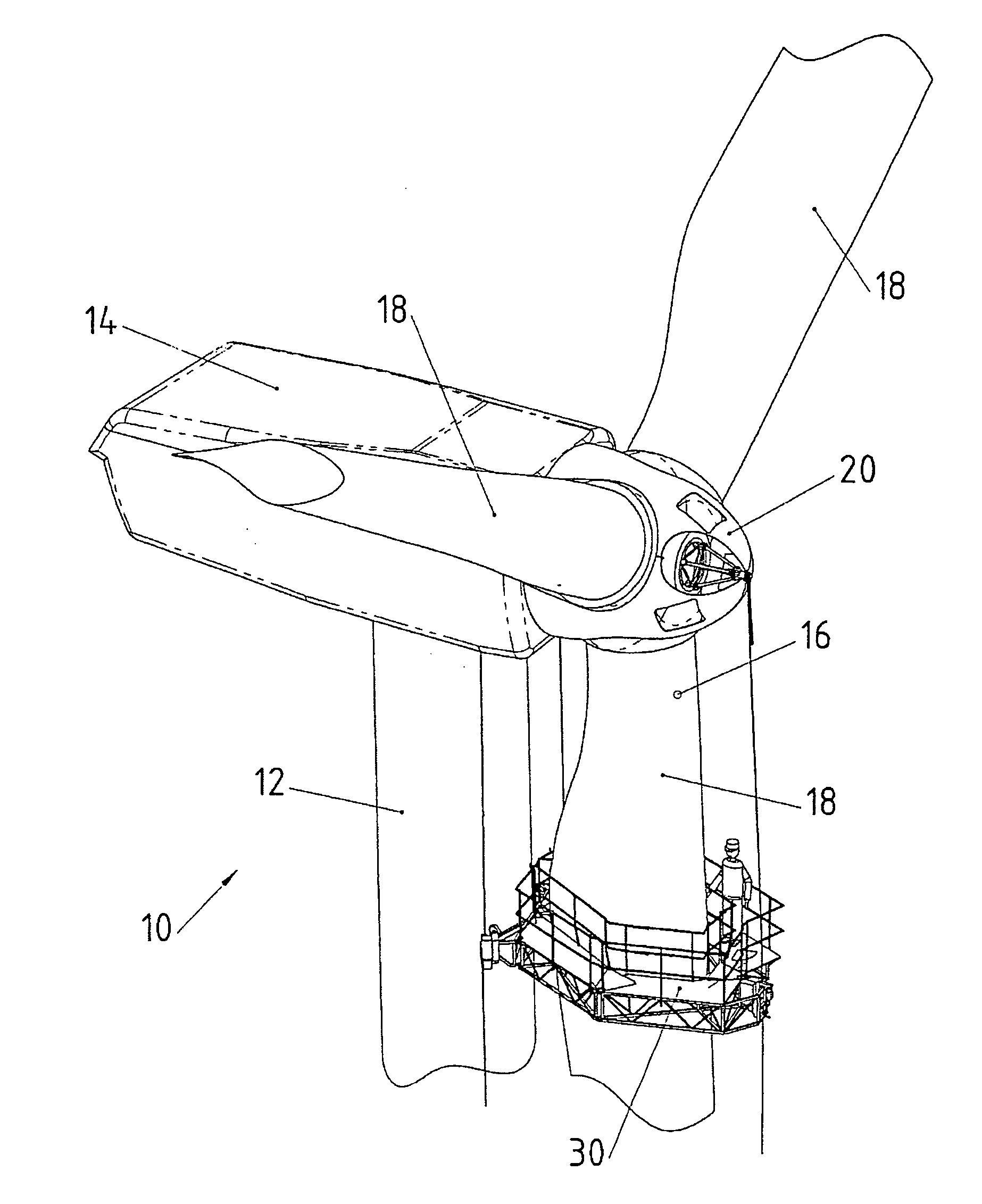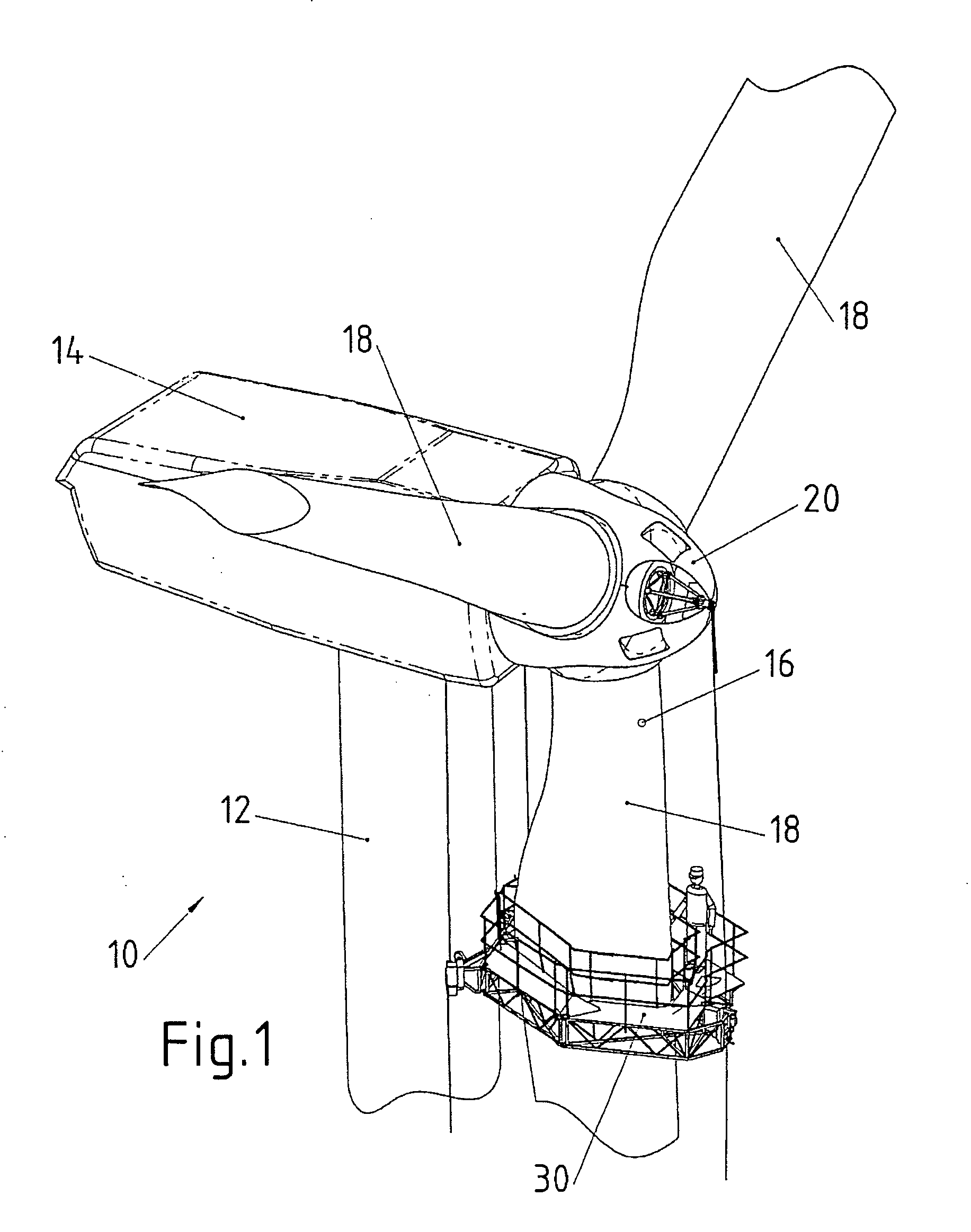Maintenance platform
a platform and maintenance technology, applied in the field of maintenance platforms, can solve the problems of inability to dismount and remount suspended access equipment after full hardening, inability to meet or fully meet the requirements of construction designs that have existed, and double unfavorable mounting methods, so as to prevent cables from twisting, increase the stability of each separate handrail, and contribute to the safety of maintenance personnel
- Summary
- Abstract
- Description
- Claims
- Application Information
AI Technical Summary
Benefits of technology
Problems solved by technology
Method used
Image
Examples
Embodiment Construction
[0034] The wind turbine 10 shown in FIG. 1 comprises a tower 12, a horizontally swivelable nacelle 14 mounted on the top end of tower 12 and a rotor 16 which is rotatable about a horizontal axis and mounted inside nacelle 14. Rotor 16 comprises three rotor blades 18 attached to a common hub 20.
[0035] A maintenance platform 30 is suspended from nacelle 14 and hub 20 by means of three support cables 32. One of said support cables 32 is attached to hub 20 by means of a cable suspension member 34, while two additional support cables 32 are attached to nacelle 14. This is shown in greater detail in FIG. 2. The maintenance platform, support cables 32 and cable suspension member 34 together form a maintenance system.
[0036]FIG. 3 provides a separate view of maintenance platform 30. Maintenance platform 30 is comprised of four sub-platforms 36 swivably connected to each other by four swivel joints 38 to form a closed chain in the form of a four-bar linkage.
[0037]FIG. 3 also shows three ca...
PUM
 Login to View More
Login to View More Abstract
Description
Claims
Application Information
 Login to View More
Login to View More - R&D
- Intellectual Property
- Life Sciences
- Materials
- Tech Scout
- Unparalleled Data Quality
- Higher Quality Content
- 60% Fewer Hallucinations
Browse by: Latest US Patents, China's latest patents, Technical Efficacy Thesaurus, Application Domain, Technology Topic, Popular Technical Reports.
© 2025 PatSnap. All rights reserved.Legal|Privacy policy|Modern Slavery Act Transparency Statement|Sitemap|About US| Contact US: help@patsnap.com



